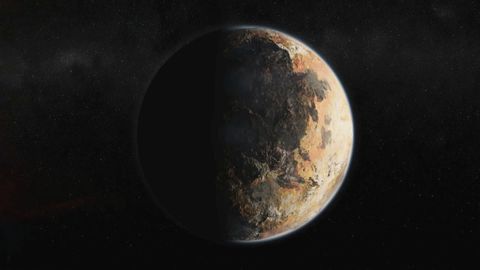
Subtitles & vocabulary
Why is Pluto not a planet? - Sky at Night: Pluto Revealed Preview - BBC Four
00
Joyce Lee posted on 2015/07/31Save
Video vocabulary
reason
US /ˈrizən/
・
UK /'ri:zn/
- Intransitive Verb
- To think and make conclusions in a logical manner
- Noun (Countable/Uncountable)
- Ability to think about facts and form a judgment
- Explanation for why something occurred or was done
A1TOEIC
More planet
US /ˈplænɪt/
・
UK /'plænɪt/
- Noun (Countable/Uncountable)
- One of the bodies that orbit the sun
- A different world or sphere of existence.
- Proper Noun
- The earth.
A2
More region
US /ˈridʒən/
・
UK /'ri:dʒən/
- Noun (Countable/Uncountable)
- Part of a country, of the world, area, etc.
- A part of the body
A2TOEIC
More status
US /ˈstetəs, ˈstætəs/
・
UK /'steɪtəs/
- Uncountable Noun
- Position or rank relative to others in a society
- Legal position of a person or thing
A2TOEIC
More Use Energy
Unlock All Vocabulary
Unlock pronunciation, explanations, and filters
